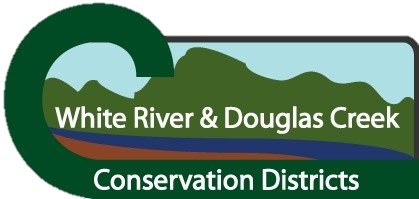Colorado's forests provide aesthetic values, clean water, wildlife habitat, recreation, minerals and renewable resources including forage and timber. Colorado forests also provide forestry jobs. The White River and Douglas Creek Conservation Districts support and encourage active management of Colorado's forests to protect your way of life and health.
Scroll through here to find short educational videos about the value and benefits to Forest Management
Wildland Fire in Ponderosa Pine: Western United States
The National Park Service explains wild fire ecology in the Western United States, specifically in Ponderosa Pine forests. Historically, Ponderosa Pine tree forests have adapted to and survived wild fires. Human influences on fire regimes has caused numerous changes to these cycles and affected both fires and the forests.
Timber Harvesting on Federal, State, and Other Public Forest Lands
The Society of American Foresters supports commercial and non-commercial timber harvesting as an objective and the primary means for maintaining resilient and sustainable forests on federal and other public lands. Experience around the world has shown that, to achieve sustainability, forested landscapes must provide a robust and mutually supportive complement of environmental, economic and social values.
Determining the Processed CutStock Recovery Rate from Standing Dead Beetle - Killed Lodgepole Pine Timber
Findings from this study reveal that no statistical
difference exists between the percentage
of cut stock yield from green living trees and beetle-killed trees that had been standing dead for up to nine years. The percentage of a beetle-killed lodgepole pine tree-length log’s cubic volume that was clearwood or blue-stain and suitable for cut stock averaged 28.9%. The average percent
of lumber that was suitable for cut stock averaged 73.6%. Finally, tree diameter, not time spent standing dead, is the more significant factor to consider when maximizing cut stock yield.
Soil Erosion Control after Wildfire
Hydrophobic Soils: "In severe, slow-moving fires, the combustion of vegetative materials creates a gas that penetrates the soil profile. As the soil cools, this gas condenses and forms a waxy coating. This causes the soil to repel water - a phenomena called hydrophobicity. This hydrophobic condition increases the rate of water runoff. Percolation of water into the soil profile is reduced, making it difficult for seeds to germinate and for the roots of surviving plants to obtain moisture."
Forest Health Tour
The White River Conservation District hosted a two day tour focused on Forest Health in 2010. Click 2010 Forest Health Tour for tour overview.
External Links
- Colorado Forest & Water Alliance - http://cofwa.net/
- Colorado State Forest Service - http://csfs.colostate.edu/
- White River National Forest - http://www.fs.usda.gov/main/whiteriver/home
- Colorado Timber Industry Association - http://www.coloradotimber.org/
